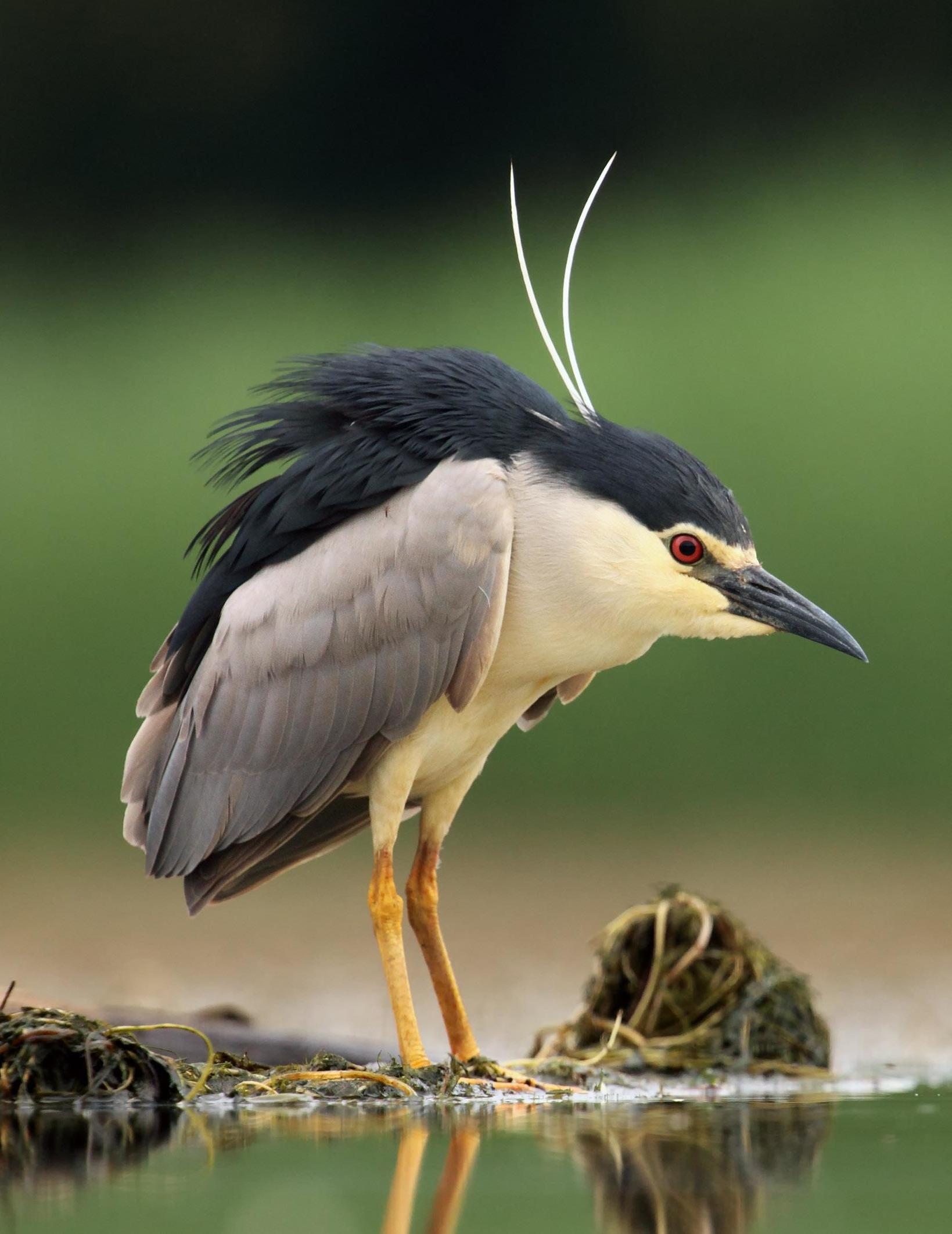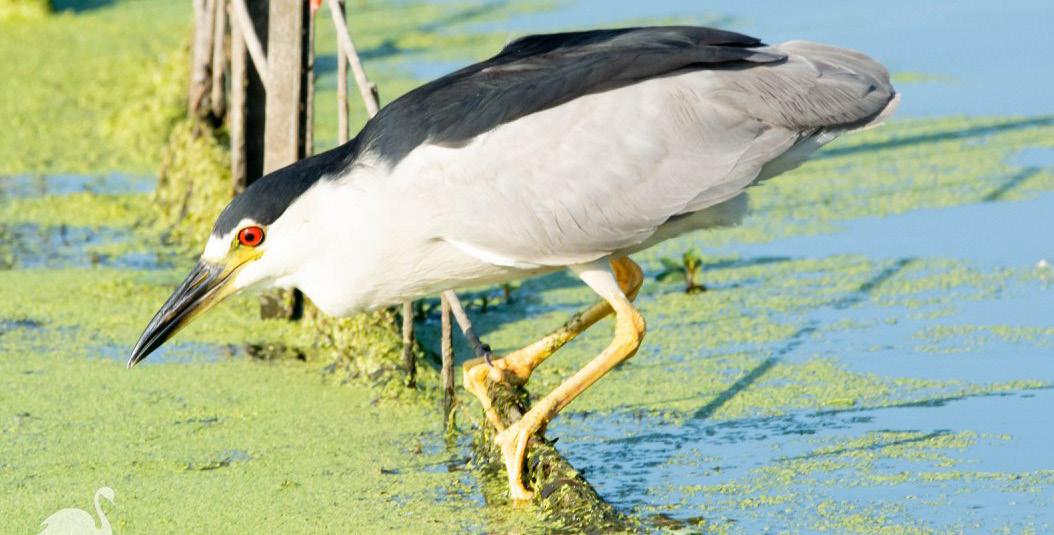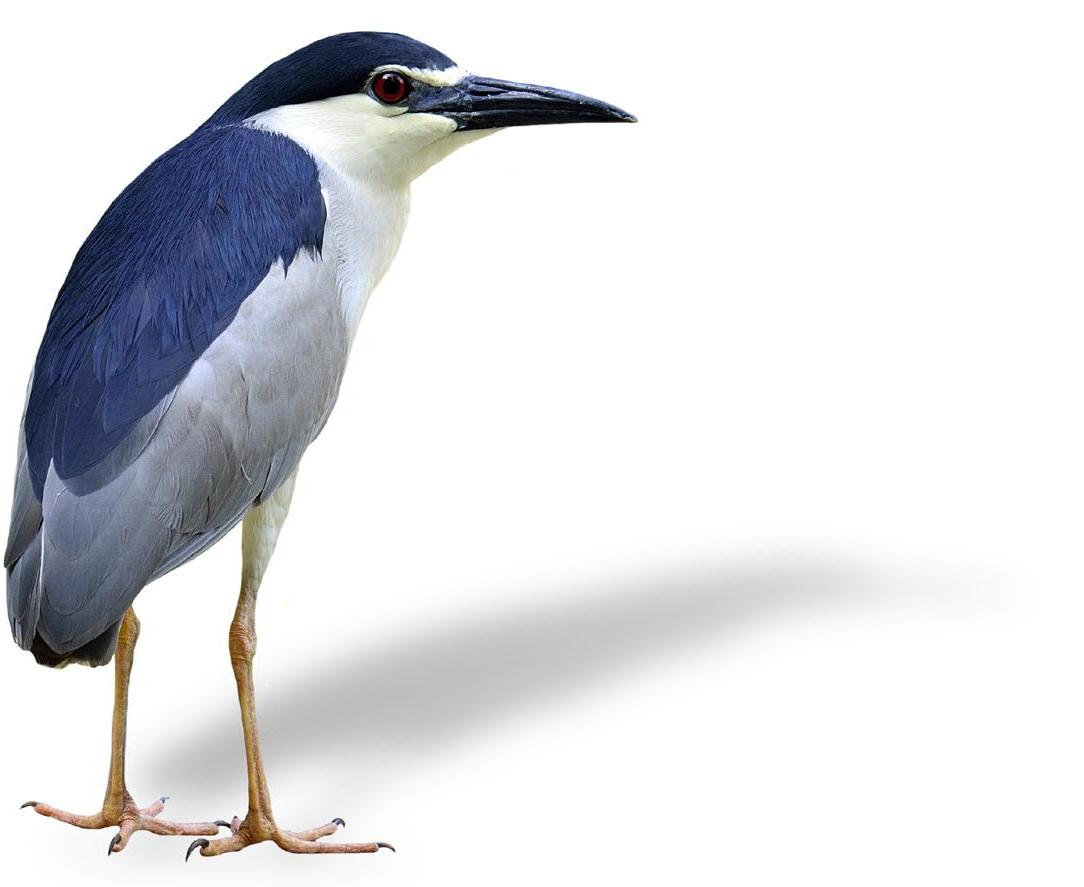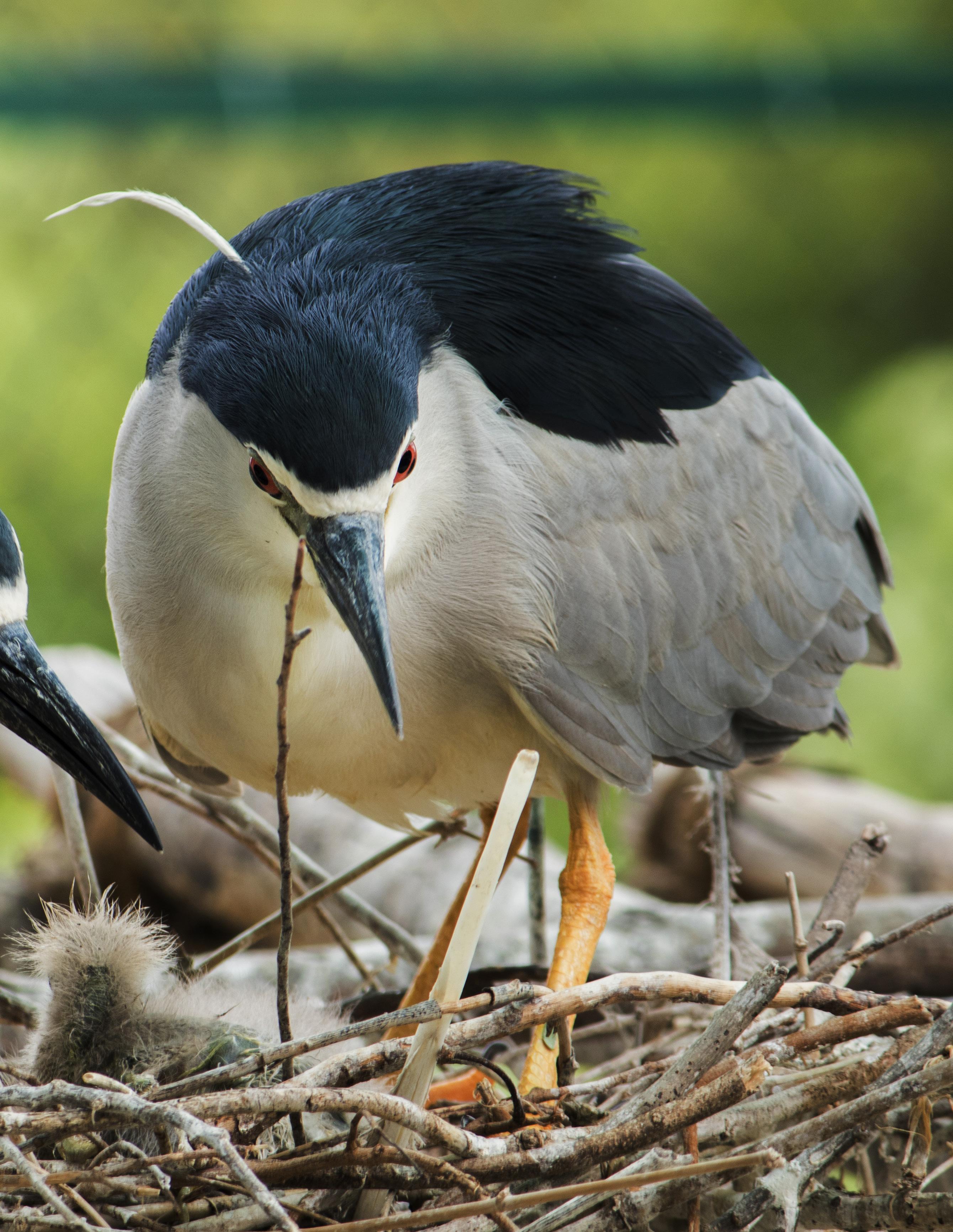
4 minute read
Black crowned Night Herons are Disappearing in Illinois
The Black-crowned Night Herons are Disappearing

WOC-A-WOC. WOC-A-WOC. WOC-A-WOC.
That’s the sound of the canary in the coal minethe sound of black crowned night herons.
These birds used to be prominent in the American Bottom - the historic floodplain area of the Mississippi River in Madison and St. Clair County. They had substantial nesting and breeding areas, called Rookeries. While scientists are not completely certain why the herons and egrets have abandoned their rookeries in our area, they have several theories. One theory is an increase in domestic predators, such as cats and dogs, have snacked on the young birds for many years. Overgrown vegetation, loss of native habitat, and nearby heavy railroad activity likely added to the loss of the population.
The herons, as well as little blue herons, cattle egrets, and snowy egrets, are among the waterbirds in southwestern Illinois experiencing dramatic population decline.

In June 2021, during a monitoring visit, Avian Ecologist Mike Ward and Research Scientist Mike Avara from Illinois Natural History Survey, were thrilled to hear the call of a single black-crowned night heron at Brushy Lake, a site protected by HeartLands Conservancy and other partners.
The Mikes knew the importance of the presence of the heron. Known as an “indicator species,” black-crowned night herons feast on aquatic animals that are very susceptible to contamination, such as heavy metals or PCBs. If the heron population is brought back to a robust level, herons can act as a pretty good indicator of what is going well or what is going poorly in the environment. A lack of herons in our region suggests there are issues with water quality and food supply. This has implications for human health as well.
The herons and egrets prefer to roost in shrubby islands surrounded by wetlands. They are not particularly great at building nests. They love a good buttonbush thicket.

According to the Mikes, black-crowned night herons and egrets can actually thrive in communities and urban settings. Large colonies were once present in Alorton, East St. Louis, Pontoon Beach, Madison, and Granite City. In 2020, however, only 9 snowy egrets were documented in the American Bottom. This trend has been similar for the past decade. The only other large population in Illinois that remains is at the Chicago Lincoln Park Zoo. Sadly, if we cannot entice the herons to roost in our region, it will be a struggle to get them back anywhere in Illinois
Brushy Lake: An Ideal Habitat
Brushy Lake is a 700-acre natural area just west of Collinsville. In 2011, HeartLands Conservancy purchased 80 acres in the 700-acre complex. The area is home to the Levee Lake Illinois Natural Areas Inventory Site, which serves as one of the best remaining shrub swamp-pond habitats remaining in the American Bottom. It’s a great place to grow buttonbush and other shrubby swamp-loving plants that herons and egrets love.
In addition to serving as a potential place for a new rookery, Brushy Lake helps reduce flooding in communities in the American Bottom by holding rainwater from areas upstream. It also helps capture sediment, keeping pollutants out of the Mississippi River and other other areas.
Right now, HeartLands Conservancy is planning habitat restoration at
Brushy Lake, which will expand the wet meadows and provide habitat for species like herons and egrets. Our partners, the Mikes, will also test out audio calls and decoys to help lure the birds to the area. Ideally, all these plans will attract the herons to breed in the wetland complex and bolster the heron population.
Another goal for Brushy Lake is to install walking paths and birdwatching stations so that the public can help document and enjoy the herons and egrets up-close.
How to Help
There are many ways to help the herons. We will have volunteer opportunities in the coming years to make Brushy Lake an ideal place for heron love connections, as well as volunteer monitoring to assist scientists with their documentation.
Funding support for HeartLands Conservancy’s conservation mission, will also help ensure we can continue to advance this effort in our region and support the work of scientists trying to save these birds.





